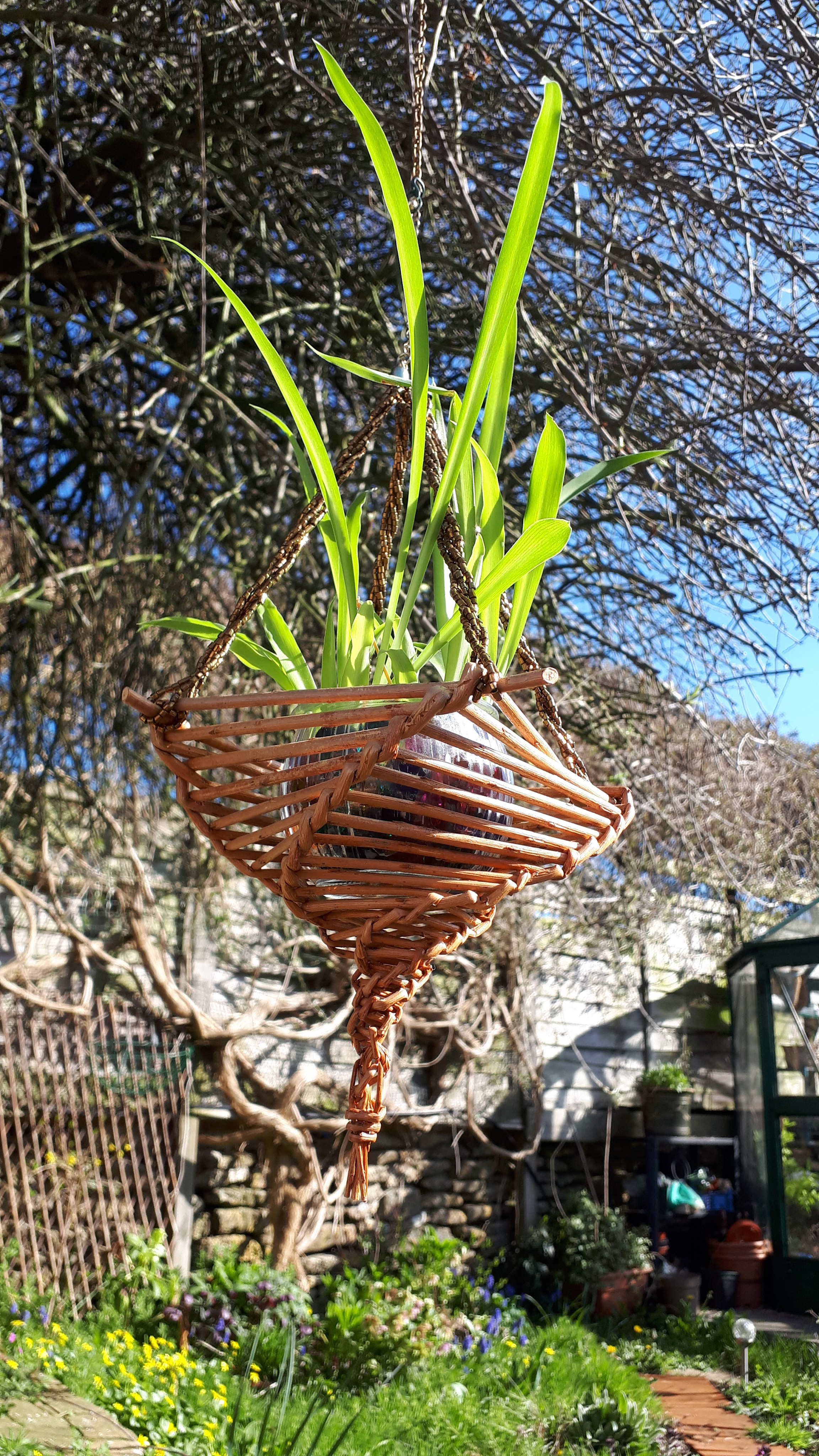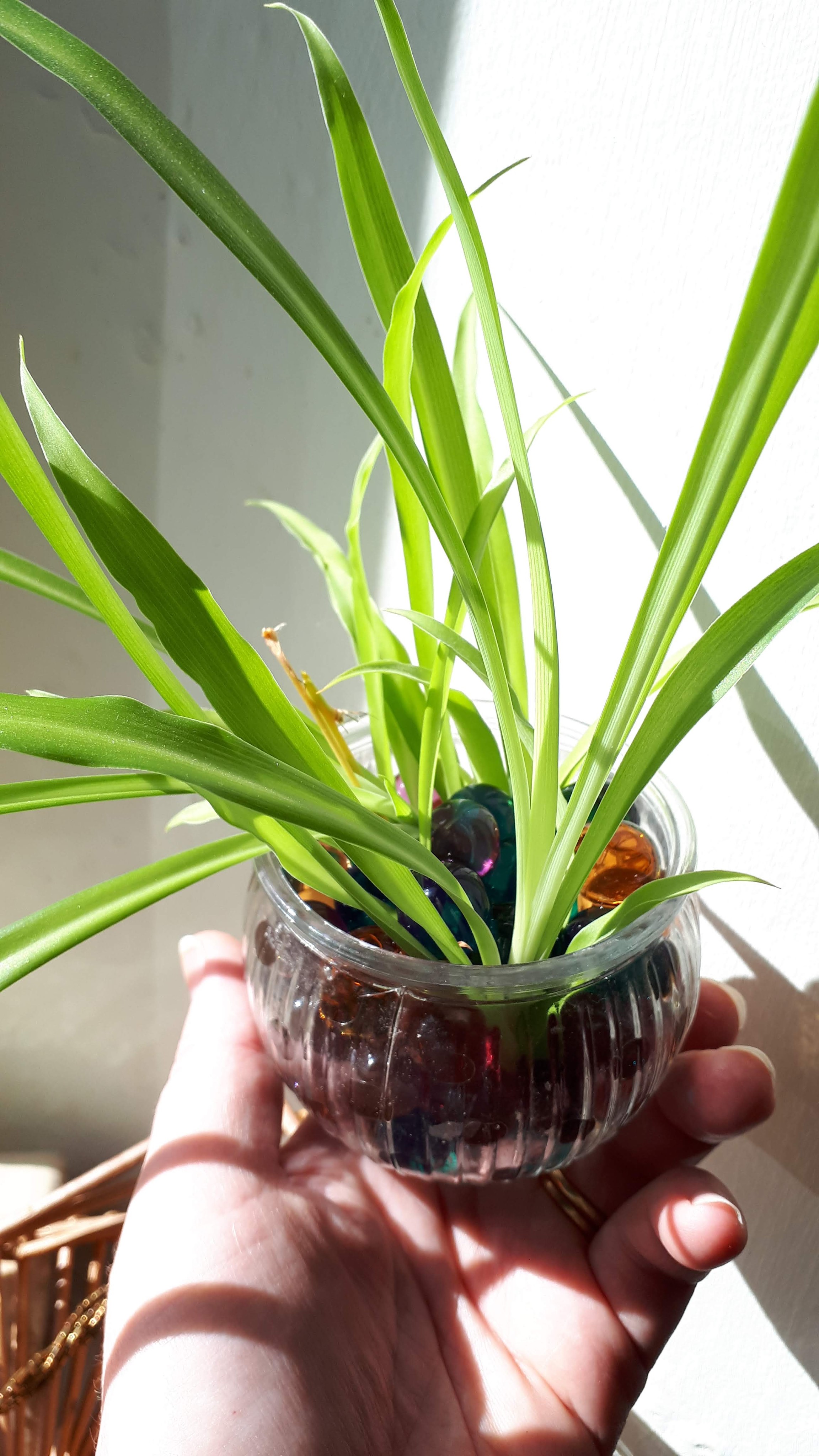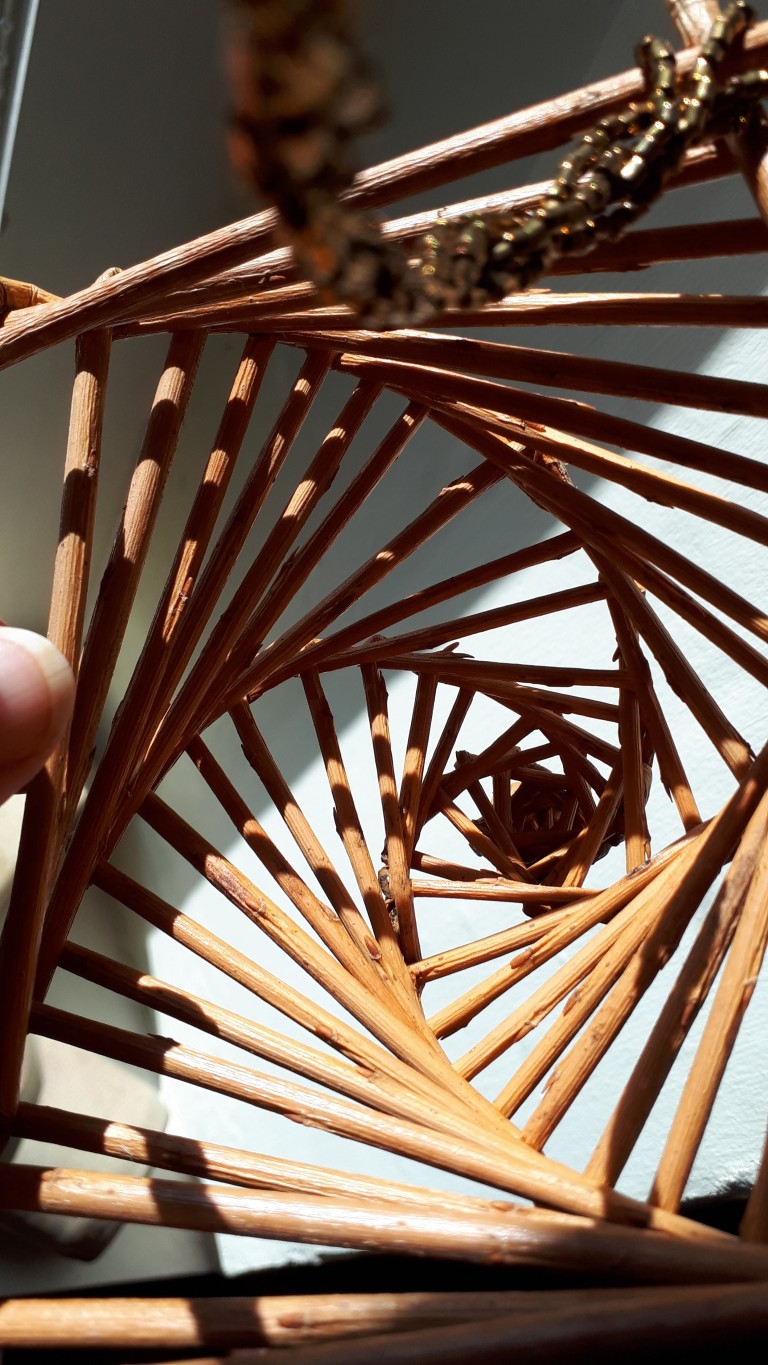Regular readers may recall that last spring I learned how to make baskets.

I’ve continued experimenting with willow baskets, and began using upcycled jewellery to hang these baskets, and looking for pretty ways to plant them that are not too heavy.

I’ve propagated spider plants and I’m growing them hydroponically – that’s with water instead of soil. I’m using water gel beads, also known as crystal soil or Orbeez. I hydrated the beads using water with some organic seaweed liquid fertiliser, which should nourish the plants as they grow. I think they’re prettier than soil…

It’s fun to make things!
This is a really simple basket, based on the traditional corn dolly. It has a groovy spiral pattern, which naturally twists and tapers.

I’m rather happy with this little indoor planter, and it’s on sale at my etsy shop.
For more about seasonal flowers and green news from Frome please visit my website at FromeBlooms.com

This is cool! I was reading last night about fences (pleached), and furniture, even houses made of live willow. This plant is very useful!
LikeLike
Oh yes! A few other trees work similarly, particularly related trees like cottonwoods. Fig trees can be woven and leaned inward (toward the top) to work as low retaining walls, if they mesh together faster than the soil erodes. They grow readily from cuttings plugged directly where they are wanted. I grew mine from suckers (figs are not grafted) that already had roots or callus growth on them.
LikeLike
Great! We’ve got black cottonwood and willow in abundance here in Washington state.
LikeLiked by 1 person
Oh, of course. There are more different species there than here.
LikeLike
The cottonwood is vital but is often hated in suburban developments because it’s really dangerous branches. We took one down in our yard close to 80 years old, many branches small trees. It’s also a serious water guzzler!
LikeLiked by 1 person
Many years ago, a cottonwood known as the ‘hybrid poplar’ was used as a fast growing but temporary tree in new big landscapes. They grew fast enough to make a big impression, and could be cut down without guilt as the slower but more desirable trees grew up. The problem was that before they grew so big that they needed to be removed, many municipalities had enacted tree preservation ordinances that would not allow such trees to be cut down. After not much more than a decade, these hybrid poplars broke pavement of these relatively young buildings and damaged utilities, only to die anyway.
LikeLike
Wow that’s crazy, but not surprising. I’m continually surprised and unimpressed at urban planning and development. My favorite local thing is Leyland cypress “hedgerows” – lot of crowding. Same for Arborvitae – no space given for maturity, so they usually die of fungal infection or just lack of water.
LikeLiked by 1 person
I just realized I’ve totally hijacked this blog post so, my apologies to the author 😬
LikeLike
Haha, no problem at all – I enjoyed the conversation. Urban planting is very interesting and when it works well can really improve a space. Bit sad when it goes wrong though, and you see litter and dead plants in concrete planters.
LikeLiked by 1 person
Yeah I agree. That’s a whole can of worms I’d rather not open right now though 🤣
LikeLike
Leland cypress did not last long here. It became popular in the 1980s, but lost popularity when we noticed that it did not last much more than ten years in smoggy regions. It really does not do well here, although some in coastal regions away from others of the same tend to do much better.
LikeLiked by 1 person